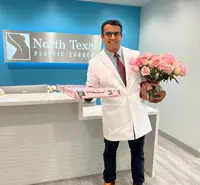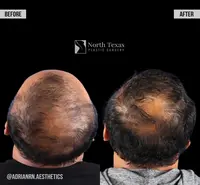Posted: November 21, 2016
A breast augmentation procedure improves the shape or size of your breasts. This can be done with implants or by transferring fat from another part of your body to your breasts. The amount of time you need to recover from a breast augmentation depends mostly on the kind of procedure you have. Learn more here!
The Day of Surgery
Breast augmentation is usually carried out under a general anesthetic, and most breast augmentations are outpatient procedures. This means that you can go home on the same day. It’s normal to feel some soreness in the breasts after having a breast augmentation. After a breast augmentation with fat transfer, you will also experience some soreness in the areas that were treated with liposuction.
The First Weeks after Surgery
It’s best to rest for several days after a breast augmentation, but there’s no need to stay in bed or restrict all of your activity. We tell patients that they can return to work within 48 hours and resume light activities when they feel well enough, being sure to follow any specific instructions from their surgeon.
Breast Augmentation with Fat Transfer
After breast augmentation with fat transfer, most people feel well enough to resume a moderate level of activity after five days. You’ll see some swelling and bruising in the breasts and perhaps some slight bruising in the areas that were treated with liposuction. The liposuction-related bruising lasts only a few days, and the bruising on the breasts should subside within a couple of weeks.
Breast Augmentation with Implants
If you choose breast augmentation with implants, your recovery depends on the placement of your implants. At North Texas Plastic Surgery, Dr. Obaid and Dr. Ver Halen place implants beneath the muscle. If you choose this procedure, they ask that you refrain from returning to work for 48 hours.
During breast augmentation recovery, closely follow any instructions your surgeon gives you. These will likely include:
Medication and Food
- Take any prescribed medications as directed.
- Adopt a low-sodium diet to help reduce swelling.
Activity
- Return to light activity the day after the procedure, but avoid strenuous exercise, including heavy lifting and sports activities, until your surgeon gives you the okay.
- Return to work in 48 hours—you may need a little longer if your job involves strenuous activities.
- Resume low-impact exercise 7 to 10 days after surgery.
- Return to cardio after three weeks.
- Avoid sleeping on your stomach for the first four weeks after surgery.
- Limit sexual activity for the first two weeks.
Clothing
- If you’re given a compression or medical bra to wear, use it as instructed. Alternatively, a sports bra is good for providing support without being overly confining.
- If you had liposuction, you may need to wear compression garments for several weeks.
- Avoid constrictive underwear for the first several weeks.
Call your surgeon or doctor right away if:
- Your incisions become infected.
- Your pain isn’t relieved by prescribed medication
- You have a high temperature (over 100.4 degrees).
Week One Follow-Up Visit
At this follow-up visit your surgeon will examine the results of your surgery and make sure that your breasts are healing normally. This will involve checking your incisions to make sure that there is no infection. With compression garments removed for this visit, you’ll be able to see the results of your surgery. There may still be some swelling, but the results will be obvious even at this early stage. If your breasts look larger than you expected at this point, don’t be alarmed. This is only due to swelling and will subside over the next few months. Your breasts will feel very firm—even hard. This is also due to swelling and is not cause for concern. It may feel uncomfortable, but it’s normal for this stage of recovery. Gentle massage can help ease discomfort and reduce swelling.
Breast Augmentation with Fat Transfer
After an augmentation with fat transfer, there are no large incisions that need to heal, but there are changes going on beneath the skin of your breasts as the fat that was implanted “settles in” to its new location. Your breasts will be swollen, but the changes that have been made by the fat transfer should be clear to see.
Three to Six Months after Surgery
At this point in your breast augmentation recovery, swelling in the breast area is mostly gone, and your breasts will feel much more normal in terms of firmness and comfort. Your breasts should be looking great and will not change in size and shape much from this point onward. During the first three months of recovery, breast implant scars will become raised and reddened. They may turn dark in color as they start to heal. By three months, the inflammation around your scars should start to go down. The scars will fade over the next several months, and by six months after surgery, most scarring should be almost completely healed. Keep in mind that it takes 12 to 18 months for full healing. In most cases, the final results of fat transfer can be seen at this point. You might have a final follow-up with your surgeon for a formal evaluation.
One Year Later
By the one-year mark of breast augmentation recovery, your breasts have conformed to their final shape. Almost all swelling is gone, and any scars you have should be completely healed. Implant scars may continue to fade over time, but fat transfer scars are so small that they’re probably undetectable at the one-year mark.
A Look Into the Future
Currently, breast implants aren’t made to last a lifetime. The average lifespan of implants is 10 years, but they don’t come with an expiration date. Some can last as long as 25 years! Still, it’s best to assume that you’ll need to replace your implants after 10 years. An advantage of breast augmentation with fat transfer is that results are permanent. Once the transferred fat cells are completely incorporated into your breast tissue, they are there for life, and there’s often no need for additional fat transfers. The breasts may change shape over your lifetime, just as anyone’s breasts change due to age and gravity, but the fat that was fully incorporated won’t need to be removed or replaced. Breast augmentation with fat transfer has the secondary benefit of liposuction, which improves your body’s overall silhouette. While a significant amount of fat can be removed during liposuction, some fat cells will be left behind. This means you can still gain weight in that area, so healthy diet and exercise habits are important after your procedure. While the recovery processes and timelines for a breast augmentation with implants and a breast augmentation with fat transfer are similar, there are some differences. These may make one procedure better for you and your lifestyle than the other. Talk to your surgeon about your goals before making your decision.

 November 21, 2016
November 21, 2016





















